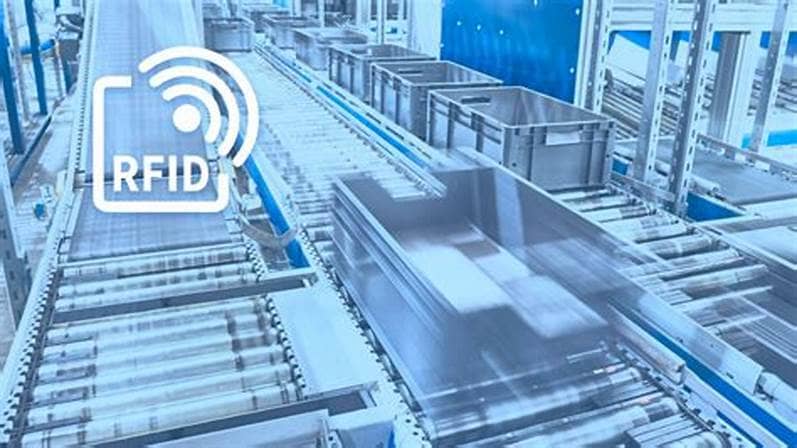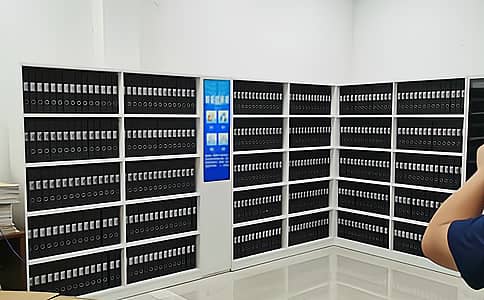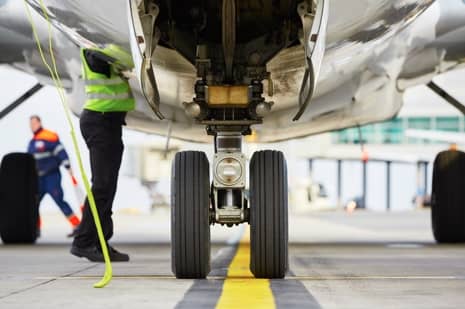 Call at :
+86 18681515767
Call at :
+86 18681515767
 Email :
marketing@jtspeedwork.com
Email :
marketing@jtspeedwork.com
 Call at :
+86 18681515767
Call at :
+86 18681515767
 Email :
marketing@jtspeedwork.com
Email :
marketing@jtspeedwork.com

As the manufacturing industry accelerates its digital transformation, product quality has become a critical factor influencing brand reputation, supply chain efficiency, and customer satisfaction. To build a closed-loop quality traceability system—one that spans raw material sourcing, production, inspection, logistics, and after-sales—many manufacturers are adopting RFID (Radio Frequency Identification) technology. Compared to traditional barcode or paper-based systems, RFID offers higher efficiency, non-contact data capture, and real-time automation, making it an ideal foundation for building a transparent, accurate, and controllable quality monitoring system. 1. The Value of RFID in Manufacturing Traceability RFID utilizes radio waves to identify and track objects. A typical RFID system consists of RFID tags, readers, and a backend management platform. In manufacturing, each component, material, or finished product can be assigned a unique RFID tag, enabling real-time tracking of its identity, status, and process flow. This approach significantly improves the integrity, timeliness, and accuracy of quality traceability, effectively solving issues in traditional methods such as data silos, manual errors, and lack of accountability. 2. Key Stages of Full-Process Quality Monitoring a. Raw Material Traceability The traceability journey begins with inbound materials. By tagging materials with RFID upon delivery, the system can automatically record supplier details, batch numbers, inspection results, and entry timestamps. Non-compliant materials can be identified and quarantined early, preventing them from entering production. b. Production Process Control On the production line, RFID tags follow each product or critical component. With RFID readers installed at each workstation, the system can log process times, operators, machine usage, and key process parameters in real time. If a quality issue occurs, the system can instantly flag the defective product and trigger alarms. For example, in automotive manufacturing, RFID can ensure that the correct components are assembled, torque levels are met, and electronic inspections are recorded—all automatically. c. Inspection and Packaging Once production is complete, RFID helps capture quality test results and link them to each product’s unique ID. During packaging, RFID enables batch scanning, ensuring the right products are packed and that inspection history is traceable to the individual unit. d. Logistics and Warehouse Management RFID plays a major role in warehousing and logistics by enabling non-line-of-sight, bulk reading of items during shipping, receiving, and inventory control. Even in complex multi-tier logistics networks, RFID ensures seamless visibility, preventing shipment errors and loss. e. After-Sales and Recall Support RFID provides long-term traceability into the post-sales stage. If a defect is discovered, the manufacturer can use RFID data to trace affected units down to specific custom...

In the era of information technology, the digitization of archives has become a crucial part of modern national governance. Particularly for national archives that house historical records, political documents, laws and regulations, collective memory, and cultural heritage, effective management is vital to ensuring institutional continuity and preserving cultural identity. As countries push forward with digital transformation, a major challenge lies in managing vast amounts of documents with high efficiency, security, and accuracy. In this context, Radio Frequency Identification (RFID) technology—an automatic, contactless identification method—is emerging as a key tool, offering strong support for precision management of historical documents. I. Challenges in Traditional Archive Management For decades, national archives have relied heavily on manual input and paper-based cataloging. Although many archives have achieved preliminary levels of digitalization, they still face critical limitations: Low Retrieval Efficiency: With millions of paper documents, photos, maps, and recordings, traditional barcode or manual catalog systems make it difficult to quickly locate specific items. High Management Costs: A large workforce is required for filing, loan registration, and inventory tasks—efforts that are time-consuming and prone to human error. Fragility and Risk of Loss: Many archival materials are irreplaceable. Physical damage or misplacement during transfers or usage can result in permanent loss. Insufficient Security: For classified or sensitive documents, traditional methods lack the ability to track usage and movement in real time, making accountability difficult in the event of data leaks. Faced with these challenges, RFID technology offers a powerful alternative with its high-speed, high-accuracy, and scalable characteristics. II. Key Advantages of RFID Technology RFID (Radio Frequency Identification) uses wireless radio waves to identify, read, and transmit data stored on small electronic tags. Compared to barcodes, RFID offers several compelling advantages: Contactless Reading: RFID tags do not require direct line-of-sight or physical contact, making it ideal for handling fragile or aged archival materials. Simultaneous Reading: Hundreds of tags can be scanned within seconds, vastly improving the speed of inventory checks. Writable Data Storage: Tags can store various types of information—document codes, loan statuses, classification details—essentially giving each item its own “data profile.” Tracking Capability: When integrated with doors, scanners, or monitoring systems, RFID enables real-time tracking of documents’ locations and movements. Long-Term Usability: RFID tags are durable and suitable for long-term use, aligning with the longevity required for national archives. These advantages make RFID not just a tool but a transformative method for archive management. III. Practical Applications of RFID in National Archive Digitization 1. Doc...

In an era where charitable organizations are under increasing public scrutiny, ensuring that donations are “clearly received, transparently used, and precisely distributed” has become a core challenge. Donors want assurance that their contributions are reaching those in genuine need, while recipients expect timely and appropriate support—especially in times of crisis. RFID (Radio Frequency Identification) technology, a key component of the Internet of Things (IoT), is gradually being adopted by nonprofit organizations to improve transparency, efficiency, and traceability in the management and distribution of donated goods. 1. The Trust Crisis and Management Bottlenecks Facing Charitable Organizations Traditionally, the distribution of donated materials relies on manual registration, paper records, and hand delivery. This approach is not only inefficient but also prone to human error and systemic vulnerabilities: Inventory and distribution records often lack accuracy; There is a lack of third-party validation mechanisms, making donation flow opaque; Slow distribution processes hinder timely disaster response; It’s difficult to verify recipient identities, leading to issues like duplicate claims or fraud. These challenges reduce the overall efficiency of donation use and, more importantly, erode public trust in charitable organizations. 2. Key Advantages of RFID Technology RFID enables automatic identification and tracking of tags using radio waves. Compared to traditional barcodes or manual methods, RFID offers several significant advantages: Contactless Reading: Tags can be read without direct line of sight—even through sealed packages; Batch Scanning: Multiple items can be identified simultaneously, greatly improving efficiency; Strong Traceability: Each RFID tag carries a unique ID, enabling end-to-end tracking; Rich Data Storage: Tags can store detailed information such as donor identity, donation time, item category, expiration dates, etc.; Tamper Resistance: Some RFID tags include encryption to prevent unauthorized data modification. These features form a robust foundation for the digital transformation of charitable logistics. 3. Key Application Scenarios of RFID in Donation Management 1. Automated Warehouse Management Every donated item can be assigned an RFID tag upon receipt, encoding relevant data such as donor name, item type, quantity, and shelf life. When entering the warehouse, RFID-enabled gates or handheld readers automatically register the items without manual input, increasing both accuracy and speed. 2. Efficient On-Site Distribution At distribution sites—such as disaster relief zones or remote villages—volunteers can use RFID handheld scanners to quickly verify donation package details and recipient identities (using RFID-enabled ID cards, if applicable). This ensures fair, one-time distribution and real-time synchronization with the central database. 3. Donation Flow Tracking and Alert Systems When integrated with GPS or NB-I...

In today’s highly competitive aviation industry, airports serve as critical nodes in air transport. Their operational efficiency directly impacts flight punctuality, passenger satisfaction, and cost control. Ground handling operations—including baggage processing, equipment deployment, boarding coordination, and staff collaboration—are essential to airport functionality. However, these operations often suffer from complex dispatching, information delays, underutilized resources, and frequent human error. Radio Frequency Identification (RFID) technology, known for its contactless operation, high recognition rate, and real-time data capture capabilities, is becoming a key driver of smart ground handling management. This article explores the practical applications, challenges, and future prospects of RFID in airport equipment and personnel management. 1. Overview of RFID Technology and Its Relevance to Airport Operations RFID (Radio Frequency Identification) is an automatic identification technology that uses radio waves to identify objects and capture relevant data. Compared to traditional barcodes, RFID offers non-contact reading, rapid multi-tag recognition, and the ability to store and update data remotely. RFID is particularly well-suited for airport environments because it: Operates reliably in extreme outdoor conditions such as heat, cold, rain, and vibration; Enables real-time tracking of asset location, operational status, and personnel distribution; Supports high-frequency, large-scale data reading without direct line of sight. These features make RFID a powerful tool for transitioning ground operations toward visibility, automation, and intelligence. 2. RFID Applications in Airport Equipment Management 2.1 Real-Time Location Tracking of Special Ground Equipment Airports deploy hundreds or thousands of mobile units, including baggage carts, conveyor belts, boarding bridges, and towing tractors. Misallocation or delayed deployment of these resources can lead to flight delays and increased costs. By attaching RFID tags to each unit and deploying fixed readers throughout the airport, dispatch systems can track real-time positions and usage status of every piece of equipment. For example, an RFID system can log the last flight serviced by a towing tractor, its return time, and its current location. This enables automatic task assignment and route optimization, significantly boosting resource utilization. 2.2 Maintenance and Lifecycle Management of Equipment RFID tags can store detailed maintenance schedules, service records, and responsible personnel data. When equipment passes by an RFID reader, the system can automatically trigger maintenance alerts. Take boarding stairs as an example—failure to service the hydraulic system on time could pose safety hazards. RFID-triggered maintenance notifications help mitigate such risks and ensure operational safety. 3. RFID in Personnel Scheduling and Safety Management 3.1 Identity Verification and Acces...

In the construction industry, managing on-site operations has always been a challenging task. Issues such as frequent personnel movement, high safety risks, and complex working environments make traditional manual management methods inefficient and error-prone, falling short of the demands of modern construction projects that require efficient, safe, and controllable operations. Against this backdrop, RFID (Radio Frequency Identification) technology, with its advantages in real-time sensing, contactless identification, and remote data reading, is becoming a key tool for driving smart construction site management—especially in areas like personnel tracking, safety monitoring, attendance management, and access control. I. Overview of RFID Technology RFID is a technology that enables contactless data transmission via radio waves. A typical system consists of tags, readers, and a backend management system. RFID tags can be attached to objects or people and store unique identification information. Readers, installed in various locations, can wirelessly read the data within a certain range and transmit it to a central system, enabling real-time monitoring and data collection. Compared to traditional identification methods like barcodes, RFID offers advantages such as strong resistance to contamination, long-range reading, simultaneous multiple-tag recognition, and no line-of-sight requirement—making it ideal for the dynamic, rugged, and open environments of construction sites. II. Key Applications of RFID in Construction Site Safety and Personnel Tracking 1. Real-Time Personnel Location and Trajectory Tracking To ensure worker safety and quick emergency response, it's essential to accurately locate every worker on site. By embedding RFID tags into helmets, uniforms, or wearable cards, and deploying readers at strategic locations, the system can continuously track the position and movement of workers. In the event of an accident, managers can instantly locate the affected individuals and deploy rescue teams accordingly. Moreover, trajectory data can be analyzed to identify behavioral patterns, high-traffic zones, and time spent in hazardous areas, providing valuable insights for improving safety protocols and optimizing workforce deployment. 2. Smart Attendance and Workforce Management Construction sites often deal with chaotic access control, buddy punching, and false work hour reporting. Manual check-in processes are time-consuming and prone to errors. By installing RFID-enabled access gates at entry and exit points, the system can automatically and accurately record attendance, eliminating fraudulent check-ins. RFID tags can also be linked to worker profiles, including ID, certifications, and training records. This allows the backend system to match personnel with job requirements and block unqualified or unauthorized workers from accessing certain tasks or areas—ensuring compliance and safety. 3. Access Control for Restricted Zones Different zones o...
Pilgrimage events, as significant religious gatherings, often involve vast crowds, complex logistics, and intense emotional and spiritual significance. Whether it is the Hajj pilgrimage to Mecca, the Kumbh Mela in India, or large-scale Buddhist gatherings in China, such events present a series of challenges, including identity verification, crowd control, health monitoring, and emergency response. Managing millions of pilgrims in a safe, respectful, and efficient manner is a major task for both event organizers and government authorities. In this context, RFID (Radio Frequency Identification) technology has emerged as a valuable tool, offering substantial benefits in identity authentication and emergency response support during pilgrimage events. I. Management Challenges in Pilgrimage Events Pilgrimage activities share several common characteristics: High-density, time-concentrated crowds Some international religious gatherings attract millions of participants over just a few days, resulting in extreme spatial crowding. Multinational, multilingual participants Pilgrims often come from diverse backgrounds, with various languages and cultures, making communication and identity verification more complicated. Environmental and health risks In regions like Mecca, high temperatures, crowd pressure, and the potential for heatstroke, illness, or stampedes are constant threats. Outdated traditional management tools Manual registration, paper credentials, and broadcast announcements lead to slow response times and poor information integration. Amid these complexities, RFID technology presents new opportunities for safer and more efficient pilgrimage management. II. Overview of RFID Technology and Its Suitability RFID uses electromagnetic fields to automatically identify and track tags attached to objects or individuals. An RFID system typically consists of three components: an electronic tag (RFID chip), a reader, and a backend database. RFID's advantages in pilgrimage settings include: Non-contact and rapid identification: Pilgrims wearing RFID wristbands or badges can be identified automatically without showing credentials. Simultaneous multi-person recognition: Well-suited for large crowds moving through checkpoints. Integration with databases: Real-time data upload supports dynamic monitoring of health status, movement, and identity. III. RFID Applications in Identity Verification Pre-registration and Wristband Distribution Pilgrims register in advance through an online platform, entering personal details such as name, nationality, emergency contacts, and medical history. This information is written into an RFID wristband or badge, which they wear throughout the event. Checkpoint-based Identity Scanning RFID gates are installed at critical entry points such as airports, train stations, and religious venues. These gates instantly verify the identity and registration status of each participant, minimizing fraud and unauthorized access. Cross-border Ident...

Intelligent Management of Worshippers: How RFID Enhances Crowd Control in Temples and Churches In recent years, with accelerating urbanization and increasingly diverse religious activities, the flow of people in religious sites such as temples and churches has grown significantly—particularly during holidays and festivals. Traditional methods of managing worshippers, such as manual registration, paper tickets, or basic queue systems, are becoming inadequate. These outdated systems often struggle to maintain order and safety amid large crowds. In this context, Radio Frequency Identification (RFID) technology is gradually being adopted by religious institutions to optimize entry management, streamline crowd control, and improve activity tracking, thereby offering worshippers a more orderly, secure, and intelligent experience. 1. Key Advantages of RFID Technology RFID offers notable advantages such as contactless identification, fast reading speeds, and the ability to scan multiple tags simultaneously. Unlike QR codes or magnetic stripe cards, RFID does not require precise alignment with a scanner. Instead, it functions effectively within a certain range, making it ideal for managing large crowds. Additionally, RFID tags are reusable and can store dynamically updated data—making them highly flexible and suitable for long-term tracking of individual worshippers’ participation. 2. Common Applications of RFID in Religious Venues a. Entrance Control and Appointment Scheduling Take a Buddhist temple during the Lunar New Year as an example. Daily visitor numbers may reach tens of thousands. Manual ticket inspection is not only inefficient but also prone to bottlenecks. With RFID-enabled systems, temples can allow worshippers to make reservations online and issue RFID-enabled cards or wristbands linked to their personal profiles. At the site, automated gates scan the RFID tags to verify identity and reservation time slots, enabling time-based entry and reducing crowd congestion. b. Devotion Tracking and Merit Data Management For worshippers with regular habits such as daily incense offerings or charity donations, RFID systems can automatically record each action. RFID readers placed at offering stations detect the worshipper’s card or bracelet and update their records. Temples can then generate transparent reports on individual merit contributions, which help both in internal data management and in providing worshippers with a sense of participation and trust. c. Real-Time Location and Emergency Response During large-scale events like fasting rituals or Christmas masses, RFID systems can be integrated with real-time location services to monitor crowd density in key areas. When sensors detect that a particular hall is over capacity, the system can alert staff to redirect people. In the event of an emergency, RFID also helps locate specific individuals—especially the elderly or disabled—enabling faster and more targeted evacuation procedures. d. Volunteer an...
As you stroll through a modern botanical garden, you might notice that the small plaques beside each plant not only display Latin names and origin information but may also conceal a tiny chip. This is a glimpse of how Radio Frequency Identification (RFID) technology is quietly integrating into the daily operations of botanical gardens. As information technology continues to evolve, botanical gardens are undergoing a digital transformation. RFID, as a key tool, is reshaping species management, visitor experiences, and scientific data collection. Challenges in Botanical Garden Management Traditional botanical garden management relies on manual records, physical labels, and paper archives. Over time, this approach has revealed several shortcomings, such as outdated information, damaged or lost labels, and time-consuming inventory processes. For large botanical gardens housing tens of thousands of plant species, precisely tracking each plant’s growth status, movement history, and research data is a massive and complex undertaking. In addition, with the growing demand for science education, botanical gardens face the challenge of delivering plant knowledge to the public in a more intelligent and interactive way. It is in this context that RFID technology has been introduced to botanical garden management systems. With its ability to enable contactless reading, batch identification, and real-time data updates, RFID effectively addresses many of the limitations of traditional management methods. The Basics of RFID and Its Suitability for Botanical Gardens An RFID system consists of tags, readers, and a management platform. Tags contain a chip and antenna that store basic plant information and management data. Readers communicate with tags via electromagnetic waves, enabling data collection and updates. The backend system integrates, analyzes, and presents this data. Botanical gardens typically use passive Ultra High Frequency (UHF) RFID tags. These tags do not require batteries, have low costs, long lifespans, and can be read from several meters away, making them ideal for large-scale deployments. Additionally, the tags must be highly weather-resistant to function reliably in sunlight, rain, humidity, and other challenging outdoor conditions. Some high-end tags even use environmentally friendly materials to ensure compatibility with plant environments. Practical Applications of RFID in Botanical Gardens 1. Accurate Species Management First and foremost, RFID greatly enhances the accuracy and efficiency of species management. Each plant is assigned a unique RFID tag at the time of planting. This tag is linked to detailed information such as species name, identification number, source of introduction, planting date, and growth records. These data are continuously uploaded to the management system, creating dynamic electronic archives. When horticulturists conduct plant inventory, maintenance, or relocation, they can simply scan the RFID tags with handheld...
Categories
New Products
JT-6210 0-1m UHF RFID Desktop USB Reader Writer ISO18000-6C Read More
JT-7100 0-3m 860-960MHz UHF RFID Industrial Grade RFID Reader Read More
JT-8380 0-6m UHF RFID 860-960MHz Middle Range Integrated Reader Read More
JT-P983 Industrial Tablet Pad RFID Handheld Reader Grade Long Range Android UHF Terminal Bluetooth RFID Reader For Warehouse Read More
JT-1550 Small Mini HF RFID 13.56MHz Module ISO14443A ISO 15693 Protocol Read More
JT-2302A 13.56MHz RFID Module ISO14443A ISO15693 Protocol Read More
JT-2302 HF RFID 13.56MHz Module ISO14443A ISO15693 Support Mifare1 IC card Read More
JT-2540 TM200 UHF RFID 4-port Module 860-960MHz TTL Read More
Copyright © 2025 Shenzhen Jietong Technology Co.,Ltd. All Rights Reserved.

IPv6 network supported